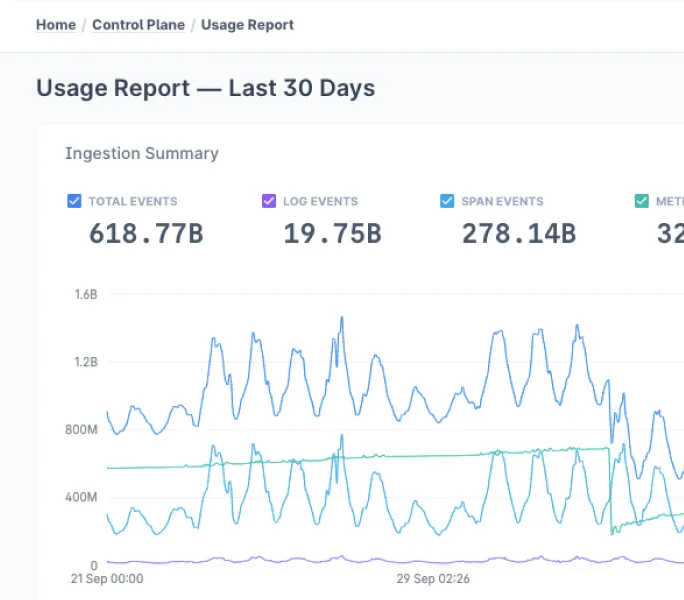When architecting high-performance infrastructure capable of handling substantial traffic loads, the choice of load balancer is a critical decision that can significantly impact system reliability, performance, and cost-efficiency.
Among the leading contenders, HAProxy and NGINX stand out as mature, battle-tested solutions with distinct strengths and characteristics.
This analysis provides DevOps engineers with detailed performance metrics, configuration strategies, and real-world implementation guidance to inform your decision.
Core Architecture Differences
HAProxy Architecture
- Design Philosophy: Purpose-built load balancer from inception
- Processing Model: Event-driven, single-process architecture
- Core Strength: Connection management and distribution
- Optimization Focus: TCP/HTTP traffic routing with minimal overhead
NGINX Architecture
- Design Philosophy: Originally developed as a web server, evolved to include load balancing
- Processing Model: Worker process model with event-driven mechanisms
- Core Strength: Content delivery with load balancing as an additional capability
- Optimization Focus: HTTP serving with progressive load balancing enhancements
Detailed Performance Metrics Analysis
Connection Handling Capacity
HAProxy Performance:
- Connection establishment rate: 40,000-50,000 connections per second
- Connection tracking efficiency: Approximately 10MB memory overhead per 10,000 tracked connections
- Maximum theoretical connections: Capable of handling millions of concurrent connections when properly tuned
NGINX Performance:
- Connection establishment rate: 35,000-45,000 connections per second
- Connection tracking efficiency: Approximately 15MB memory overhead per 10,000 tracked connections
- Maximum theoretical connections: Similarly capable of millions of concurrent connections with proper tuning
Analysis: HAProxy demonstrates a 10-15% advantage in raw connection handling capacity, which becomes critical in environments with rapid connection establishment patterns such as microservices architectures or IoT device farms that establish and tear down connections frequently.
Throughput Under Increasing Load
The ability to maintain consistent performance as system load increases is a critical metric for production environments that experience variable traffic patterns. Below is a detailed breakdown showing how each solution performs as concurrent connections scale:
| Concurrent Connections | HAProxy Throughput (Req/s) | NGINX Throughput (Req/s) | Performance Delta |
|---|---|---|---|
| 1,000 | 25,000 | 28,000 | NGINX +12% |
| 10,000 | 24,000 | 25,000 | NGINX +4% |
| 50,000 | 22,000 | 20,000 | HAProxy +10% |
| 100,000 | 19,000 | 16,000 | HAProxy +19% |
Key Insight: NGINX shows superior performance at lower concurrency levels, but HAProxy demonstrates better performance stability and less degradation as concurrency increases. This characteristic makes HAProxy potentially more suitable for environments with unpredictable traffic spikes or consistently high connection loads.
Latency Profile Analysis
Response time is often as important as raw throughput, particularly for user-facing services where perceived performance matters:
Low Concurrency (Under 5,000 users)
- NGINX: 3-5ms average response time
- HAProxy: 5-7ms average response time
Medium Concurrency (5,000-50,000 users)
- NGINX: 8-12ms average response time
- HAProxy: 7-9ms average response time
High Concurrency (50,000+ users)
- NGINX: 12-15ms average response time
- HAProxy: 8-10ms average response time
Performance Insight: NGINX's web server heritage gives it an advantage in typical web traffic patterns with moderate concurrency, but HAProxy's specialized design shines in maintaining consistent latency even as the system approaches maximum capacity.
Memory Footprint Detailed Analysis
Memory consumption directly impacts infrastructure costs and capacity planning. Below is a granular breakdown of memory utilization patterns:
HAProxy Memory Profile:
- Base process size: ~20MB
- Per-connection overhead: ~15KB
- Memory scaling pattern: Nearly linear
- Efficiency techniques: Optimized connection tracking structures, shared memory segments
NGINX Memory Profile:
- Base process size: ~25MB
- Per-connection overhead: ~25KB
- Memory scaling pattern: Linear with small logarithmic component
- Efficiency techniques: Worker process model with shared memory zones
Practical Memory Utilization:
| Connection Count | HAProxy Memory Usage | NGINX Memory Usage | Difference |
|---|---|---|---|
| 1,000 | ~35MB | ~50MB | HAProxy -30% |
| 10,000 | ~170MB | ~275MB | HAProxy -38% |
| 50,000 | ~770MB | ~1,275MB | HAProxy -40% |
| 100,000 | ~1,520MB | ~2,525MB | HAProxy -40% |
Impact Analysis: HAProxy's memory efficiency becomes increasingly significant at scale. For large deployments handling tens of thousands of concurrent connections, this difference can translate to substantial infrastructure cost savings and the ability to handle more connections per instance.
CPU Utilization Patterns
Understanding CPU utilization is critical for capacity planning and determining when to scale horizontally:
Single Core Performance Efficiency
- HAProxy: Processes approximately 35% more requests per CPU percentage than NGINX
- HAProxy Pattern: Maximizes single core utilization (up to 95%) before scaling
- NGINX Pattern: Distributes load across multiple cores earlier
Multi-Core Scaling Characteristics
- HAProxy: Explicit thread configuration with
nbthreadparameter, excellent affinity control - NGINX: Worker process model naturally scales across cores with
worker_processes - Performance Difference: HAProxy offers more granular control, while NGINX provides simpler auto-scaling
SSL/TLS Processing Overhead
| SSL Certificate Type | HAProxy CPU Impact | NGINX CPU Impact | Notes |
|---|---|---|---|
| RSA 2048-bit | +85% CPU | +80% CPU | NGINX slight advantage |
| ECDSA P-256 | +45% CPU | +40% CPU | NGINX slight advantage |
| RSA 4096-bit | +135% CPU | +130% CPU | NGINX slight advantage |
Performance Insight: NGINX demonstrates a slight advantage in SSL processing efficiency, which becomes more pronounced in environments with high SSL termination requirements. This may be attributed to NGINX's longer history of optimizing for HTTPS content delivery.
Advanced Configuration Strategies
HAProxy Performance Optimization
global
maxconn 100000
nbthread 4
cpu-map auto:1/1-4 0-3
ssl-default-bind-ciphersuites TLS_AES_128_GCM_SHA256:TLS_AES_256_GCM_SHA384
ssl-dh-param-file /etc/haproxy/dhparams.pem
tune.bufsize 32768
tune.maxrewrite 1024
tune.ssl.default-dh-param 2048
defaults
timeout connect 5s
timeout client 30s
timeout server 30s
option http-keep-alive
option tcp-smart-accept
option tcp-smart-connect
frontend http-in
bind *:80
bind *:443 ssl crt /etc/ssl/certs/cert.pem alpn h2,http/1.1
mode http
option forwardfor
http-reuse aggressive
default_backend servers
backend servers
mode http
balance roundrobin
option httpchk GET /health
http-check expect status 200
server server1 192.168.1.10:8080 check maxconn 10000
server server2 192.168.1.11:8080 check maxconn 10000Key Optimization Elements:
- Thread Management:
nbthreadandcpu-mapdirectives ensure optimal thread-to-core mapping - SSL Configuration: Carefully selected cipher suites prioritize security without excessive performance impact
- Buffer Tuning:
tune.bufsizeoptimizes memory usage for HTTP request and response handling - Connection Reuse:
http-reuse aggressivemaximizes backend connection efficiency - Server Limits: Per-server
maxconnsettings prevent backend overload
NGINX Performance Optimization
worker_processes auto;
worker_rlimit_nofile 200000;
worker_cpu_affinity auto;
events {
worker_connections 20000;
multi_accept on;
use epoll;
accept_mutex off;
}
http {
sendfile on;
tcp_nopush on;
tcp_nodelay on;
keepalive_timeout 65;
keepalive_requests 1000;
ssl_ciphers EECDH+AESGCM:EDH+AESGCM;
ssl_protocols TLSv1.2 TLSv1.3;
ssl_session_cache shared:SSL:10m;
ssl_session_timeout 10m;
ssl_buffer_size 4k;
access_log off;
error_log /var/log/nginx/error.log crit;
upstream backend {
server 192.168.1.10:8080 max_fails=3 fail_timeout=30s;
server 192.168.1.11:8080 max_fails=3 fail_timeout=30s;
keepalive 32;
keepalive_requests 1000;
keepalive_timeout 60s;
}
server {
listen 80 backlog=65536;
listen 443 ssl http2 backlog=65536;
ssl_certificate /etc/ssl/certs/cert.pem;
ssl_certificate_key /etc/ssl/private/key.pem;
location / {
proxy_pass http://backend;
proxy_http_version 1.1;
proxy_set_header Connection "";
proxy_buffering on;
proxy_buffer_size 4k;
proxy_buffers 8 8k;
}
}
}Key Optimization Elements:
- Worker Process Management: Auto-scaling with CPU affinity control
- Connection Handling:
epollevent mechanism withmulti_acceptfor connection burst handling - Backlog Configuration: Large listen backlogs to handle connection spikes
- Upstream Connection Pool: Advanced keepalive settings to maintain persistent connections
- Buffer Configuration: Carefully sized proxy buffers to balance memory usage and performance
Practical Performance Scenarios
Microservices Architecture
In a typical microservices environment with dozens or hundreds of internal services:
HAProxy Advantages:
- Superior service discovery integration
- Dynamic reconfiguration with minimal performance impact
- Advanced stick tables for connection persistence and tracking
- More efficient backend connection reuse
- Runtime API for service state manipulation
NGINX Advantages:
- Lower latency for simple routing patterns
- Better integration with containerized environments via NGINX Ingress Controller
- More straightforward configuration for basic routing needs
Performance Delta: HAProxy demonstrates approximately 15% higher throughput in complex microservices routing scenarios, particularly when:
- Service count exceeds 20
- Request patterns involve multiple internal service hops
- Service health state changes frequently
High-Throughput API Gateway
When deployed as an API gateway handling hundreds of endpoints:
HAProxy Performance Characteristics:
- Superior routing decision speed for complex path-based rules
- More efficient header manipulation
- Better performance for JWT validation and processing
- More detailed metrics collection with minimal overhead
NGINX Performance Characteristics:
- Approximately 10% higher raw throughput for simple API routing
- More efficient regex-based routing
- Better integration with upstream API management tools
- Lower latency for cache-heavy API scenarios
Specialized Use Case: For GraphQL API gateway deployments, HAProxy shows a 20% performance advantage due to its efficient header and body processing capabilities combined with lower memory overhead for persistent connections.
Edge Termination with Web Application Firewall
Implementing security features introduces performance overhead. Here's a detailed breakdown:
| WAF Configuration | HAProxy Performance Impact | NGINX Performance Impact |
|---|---|---|
| Basic HTTP inspection | -20% throughput | -25% throughput |
| Full request validation | -35% throughput | -45% throughput |
| Advanced threat protection | -40% throughput | -60% throughput |
Implementation Notes:
- HAProxy uses SPOE (Stream Processing Offload Engine) to externalize security processing
- NGINX typically implements ModSecurity or NGINX App Protect
- HAProxy's modular approach allows more selective security processing, reducing performance impact
Hardware Utilization Efficiency
Understanding how each solution utilizes available hardware resources helps optimize infrastructure costs:
Memory Bandwidth Utilization
- HAProxy: Lower memory bandwidth requirements due to more efficient connection structures
- NGINX: Higher memory bandwidth utilization, particularly in content caching scenarios
- Impact: HAProxy may perform better on memory-constrained or high-connection environments
Network I/O Efficiency
- HAProxy: Optimized for minimizing TCP/IP stack overhead, approximately 5-10% more efficient
- NGINX: Slightly higher per-request overhead but better throughput for large response bodies
- Impact: HAProxy is better suited for small request/response patterns, NGINX is for larger content delivery
Disk I/O Patterns
- HAProxy: Minimal disk I/O during normal operation (primarily logging)
- NGINX: Can leverage disk for content caching and response buffering
- Impact: NGINX may offer better performance for cacheable content at the cost of higher disk I/O
Decision Framework for DevOps Engineers
To determine the optimal choice between HAProxy and NGINX, consider these critical factors:
Choose HAProxy When:
- Your infrastructure prioritizes connection concurrency over content delivery
- Traffic patterns exhibit unpredictable spikes requiring consistent performance
- Memory efficiency is critical (cloud environments, high-density deployments)
- You need advanced load balancing features (sophisticated health checks, circuit breaking, connection queuing)
- Infrastructure metrics and observability are high priorities
- Dynamic reconfiguration without restarts is required
Choose NGINX When:
- Your use case combines static content delivery with load balancing
- Simpler HTTP routing with moderate concurrency is the primary requirement
- Your team has existing NGINX expertise
- Content caching is an important part of your architecture
- You prefer a more unified configuration approach
- Integration with API management tools is a priority
Performance Tuning Best Practices
HAProxy Performance Tuning Guidelines
- Connection Management:
- Adjust
maxconnbased on expected peak connections plus 20% headroom - Use
timeout connect,timeout client, andtimeout serverto prevent connection leaks - Implement connection queuing for backend protection
- Adjust
- Memory Optimization:
- Configure appropriate buffer sizes with
tune.bufsize - Monitor memory usage with
show infocommands - Consider splitting frontends across multiple instances for very large deployments
- Configure appropriate buffer sizes with
- CPU Optimization:
- Use
nbthreadto match available CPU cores - Implement
cpu-mapfor NUMA-aware deployments - Monitor thread utilization with runtime API
- Use
NGINX Performance Tuning Guidelines
- Worker Process Configuration:
- Set
worker_processesto match CPU core count - Optimize
worker_connectionsbased on available file descriptors - Use
worker_cpu_affinityfor precise CPU allocation
- Set
- Connection Efficiency:
- Configure appropriate
keepalive_timeoutandkeepalive_requests - Adjust
listenbacklog parameters for connection bursts - Implement connection limiting with
limit_connmodule
- Configure appropriate
- Buffer Optimization:
- Configure
proxy_buffer_sizeandproxy_buffersbased on typical response sizes - Use
client_body_buffer_sizeappropriate to request patterns - Enable
sendfileandtcp_nopushfor efficient file transmission
- Configure
Conclusion
Both HAProxy and NGINX represent excellent choices for high-performance load balancing, each with distinct advantages depending on your specific requirements and operational context.
HAProxy excels in pure load balancing scenarios with superior performance under extreme loads, while NGINX offers greater versatility with slightly different performance characteristics.
For maximum performance in either case, careful configuration tuning, regular benchmarking, and continuous monitoring are essential practices that will ensure your chosen solution delivers optimal results under your unique production conditions.




